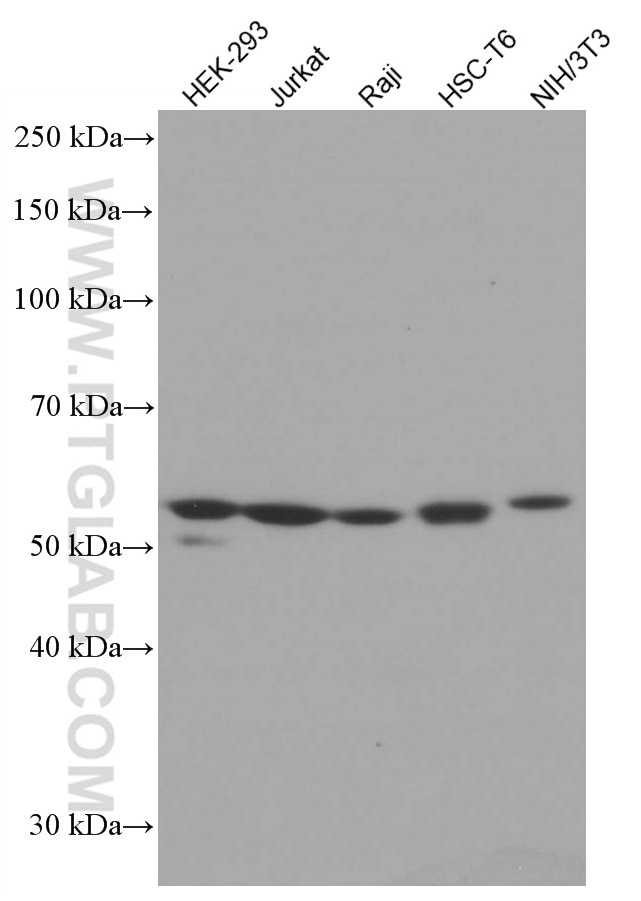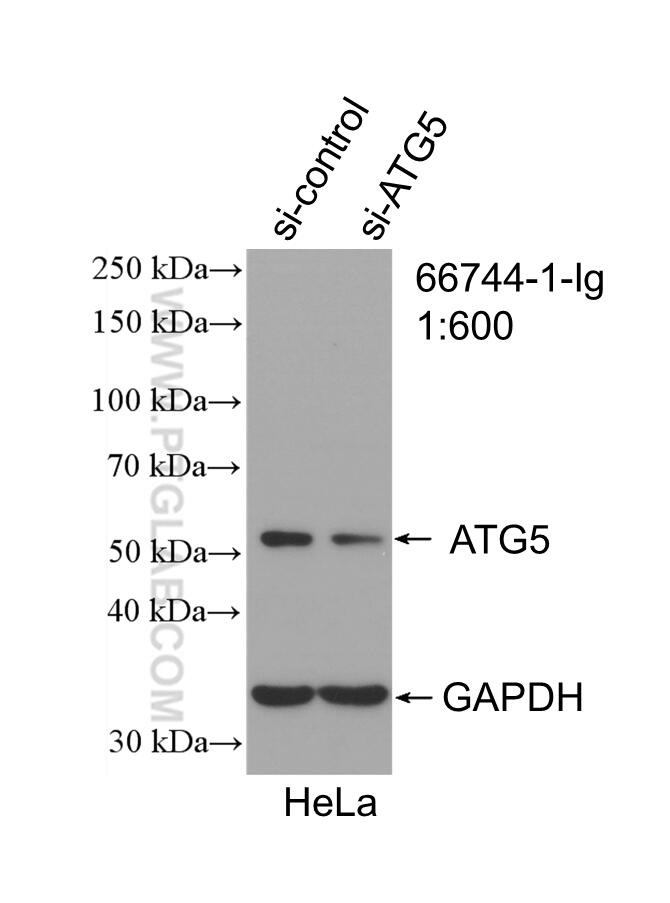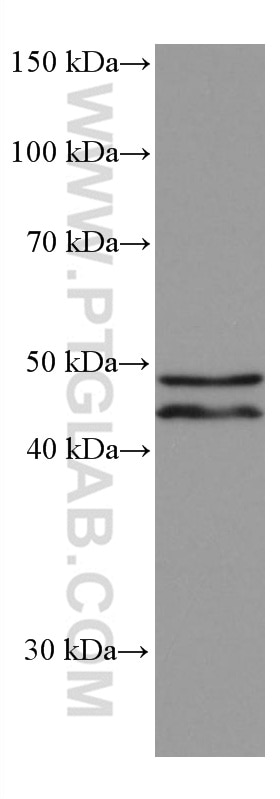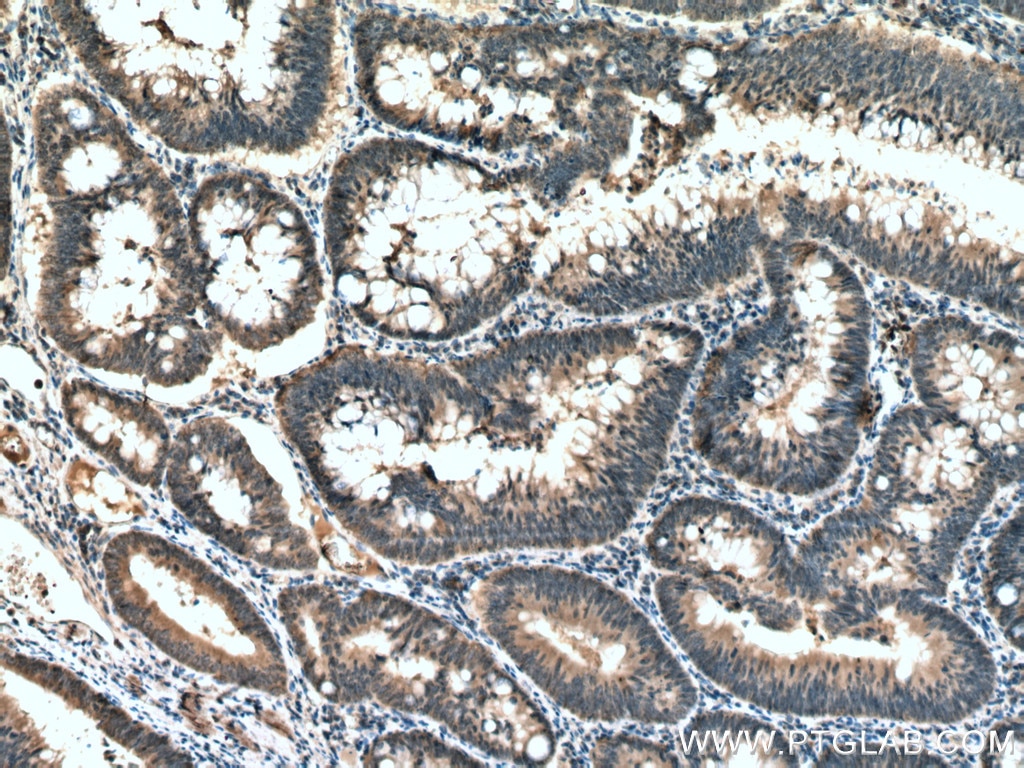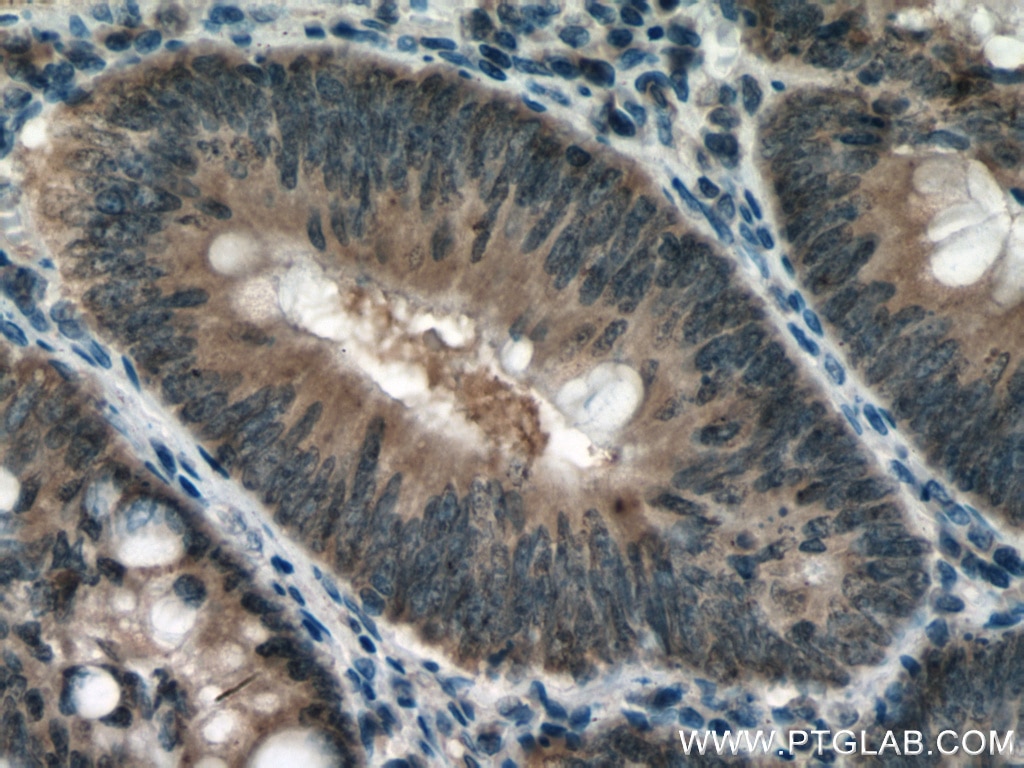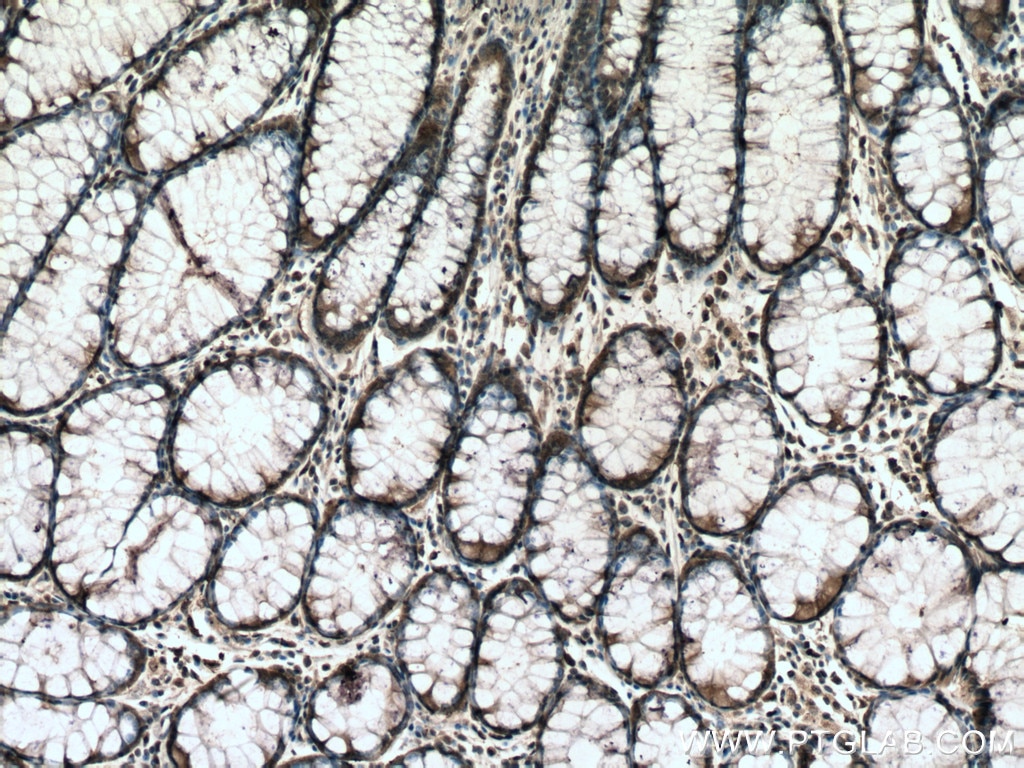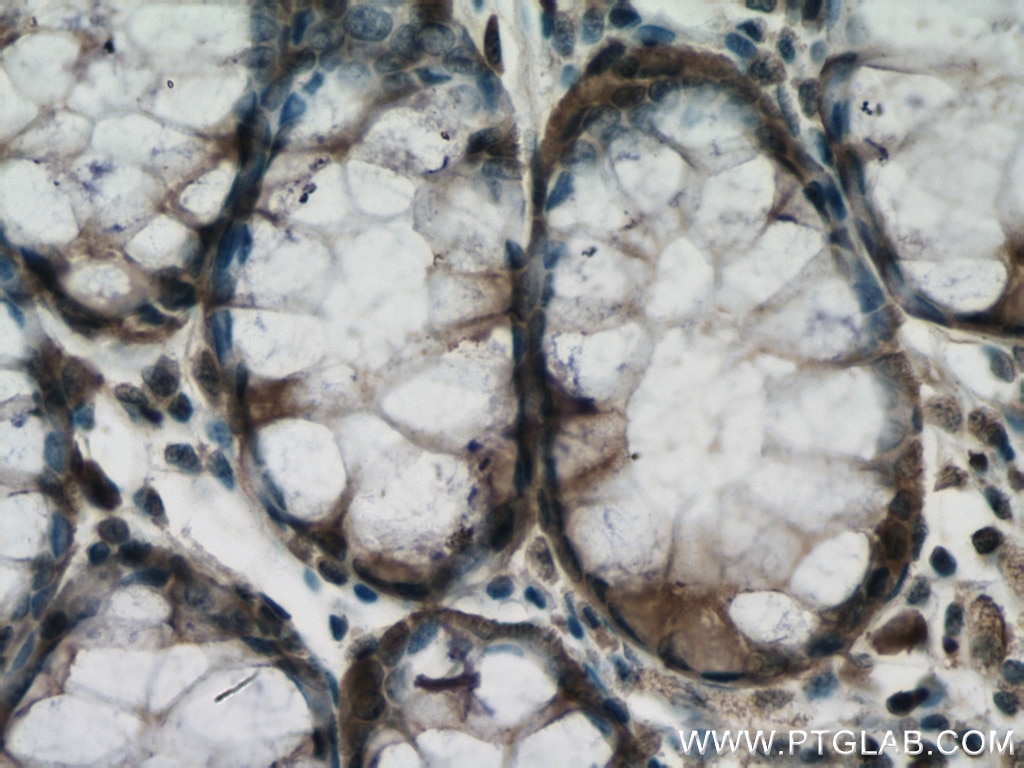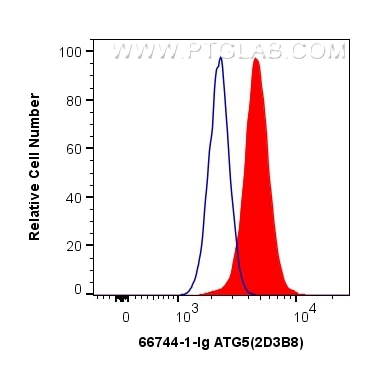- Featured Product
- KD/KO Validated
ATG5 Monoclonal antibody
ATG5 Monoclonal Antibody for FC, IHC, WB, ELISA
Host / Isotype
Mouse / IgG2a
Reactivity
human, mouse, rat and More (1)
Applications
WB, IHC, IF, FC, ELISA
Conjugate
Unconjugated
CloneNo.
2D3B8
Cat no : 66744-1-Ig
Synonyms
Validation Data Gallery
Tested Applications
| Positive WB detected in | HEK-293 cells, HeLa cells, Jurkat cells, Raji cells, HSC-T6 cells, NIH/3T3 cells |
| Positive IHC detected in | human colon cancer tissue Note: suggested antigen retrieval with TE buffer pH 9.0; (*) Alternatively, antigen retrieval may be performed with citrate buffer pH 6.0 |
| Positive FC detected in | MCF-7 cells |
Recommended dilution
| Application | Dilution |
|---|---|
| Western Blot (WB) | WB : 1:1000-1:6000 |
| Immunohistochemistry (IHC) | IHC : 1:150-1:600 |
| Flow Cytometry (FC) | FC : 0.40 ug per 10^6 cells in a 100 µl suspension |
| Sample-dependent, check data in validation data gallery | |
Published Applications
| KD/KO | See 4 publications below |
| WB | See 28 publications below |
| IF | See 1 publications below |
Product Information
66744-1-Ig targets ATG5 in WB, IHC, IF, FC, ELISA applications and shows reactivity with human, mouse, rat samples.
| Tested Reactivity | human, mouse, rat |
| Cited Reactivity | human, rat, mouse, pig |
| Host / Isotype | Mouse / IgG2a |
| Class | Monoclonal |
| Type | Antibody |
| Immunogen | ATG5 fusion protein Ag16685 相同性解析による交差性が予測される生物種 |
| Full Name | ATG5 autophagy related 5 homolog (S. cerevisiae) |
| Calculated molecular weight | 32 kDa |
| Observed molecular weight | 50-55 and 40-45 kDa |
| GenBank accession number | BC002699 |
| Gene symbol | ATG5 |
| Gene ID (NCBI) | 9474 |
| RRID | AB_2882092 |
| Conjugate | Unconjugated |
| Form | Liquid |
| Purification Method | Protein A purification |
| Storage Buffer | PBS with 0.02% sodium azide and 50% glycerol pH 7.3. |
| Storage Conditions | Store at -20°C. Stable for one year after shipment. Aliquoting is unnecessary for -20oC storage. |
Background Information
ATG5, also named as APG5L and ASP, belongs to the ATG5 family. It is required for autophagy. It plays an important role in the apoptotic process, possibly within the modified cytoskeleton. Its expression is a relatively late event in the apoptotic process, occurring downstream of caspase activity. Autophagy is a catabolic process for the autophagosomic-lysosomal degradation of bulk cytoplasmic contents. Formation of the autophagosome involves a ubiquitin-like conjugation system in which ATG12 is covalently bound to ATG5 and targeted to autophagosome vesicles. It mediates autophagosome-independent host protection. 66744-1-Ig antibody can recognize the ATG5-ATG12 complex (50-55 kDa) which can be truncated and generate a 40-45 kDa band. (PMID: 19783656, 25032862)
Protocols
| Product Specific Protocols | |
|---|---|
| WB protocol for ATG5 antibody 66744-1-Ig | Download protocol |
| IHC protocol for ATG5 antibody 66744-1-Ig | Download protocol |
| Standard Protocols | |
|---|---|
| Click here to view our Standard Protocols |
Publications
| Species | Application | Title |
|---|---|---|
Gastroenterology Pancreatic acinar cells-derived sphingosine-1-phosphate contributes to fibrosis of chronic pancreatitis via inducing autophagy and activation of pancreatic stellate cells | ||
J Nanobiotechnology Cold exposure protects against medial arterial calcification development via autophagy | ||
J Nanobiotechnology Reciprocal regulation of NRF2 by autophagy and ubiquitin-proteasome modulates vascular endothelial injury induced by copper oxide nanoparticles.
| ||
Cancer Cell Int LncRNA LZTS1-AS1 induces proliferation, metastasis and inhibits autophagy of pancreatic cancer cells through the miR-532 /TWIST1 signaling pathway | ||
Chemosphere Tetrachlorobenzoquinone exposure triggers ferroptosis contributing to its neurotoxicity. | ||
Stem Cell Res Ther Oncostatin M receptor regulates osteoblast differentiation via extracellular signal-regulated kinase/autophagy signaling. |
Reviews
The reviews below have been submitted by verified Proteintech customers who received an incentive forproviding their feedback.
FH Marina (Verified Customer) (11-22-2021) | ATG 5 and the complex ATG5-ATG12 are visible, almost no background.
|
